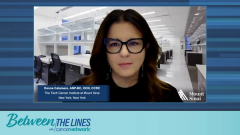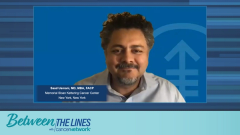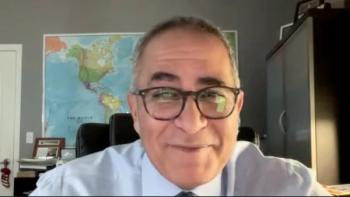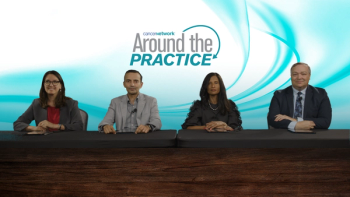
Overview of Relapsed/Refractory Multiple Myeloma
The expert panel provides an overview of relapsed/refractory multiple myeloma, with a focus on current therapeutic options and unmet needs in the treatment space.
Episodes in this series

This is a video synopsis/summary of a Between the Lines series featuring Donna Catamero, ANP-BC, OCN, CCRC; Cesar Rodriguez, MD; and Saad Usmani, MD, MBA, FACP.
Usmani distinguishes between relapsed and refractory multiple myeloma. Refractory disease progresses on therapy, whereas relapsed disease recurs after a treatment-free interval of at least 2 months. Management involves selecting optimal regimens based on patient and disease factors and prior treatment tolerance. If disease is triple-class refractory, options narrow but new targets such as BCMA and GPRC5D enable chimeric antigen receptor (CAR) T-cell and bispecific antibody therapies. Two CAR T-cell products targeting BCMA are approved: idecabtagene vicleucel and ciltacabtagene autoleucel. Bispecifics include teclistamab and elranatamab.
Despite emerging treatments, unmet needs remain, including CAR T-cell accessibility, capacity for bispecific antibodies, managing renal dysfunction and frailty, post-BCMA progression, and high-risk cytogenetics.
Video synopsis is AI generated and reviewed by CancerNetwork® editorial staff.
Newsletter
Stay up to date on recent advances in the multidisciplinary approach to cancer.





![“[This approval] will be a quite dramatic change in our philosophy and practice in multiple myeloma," according to Joseph Mikhael, MD, MEd, FRCPC, FACP, FASCO.](https://cdn.sanity.io/images/0vv8moc6/cancernetwork/3cab3ada4c023b68c118240a512e31d72a7f931b-1200x628.png?w=350&fit=crop&auto=format)













































































